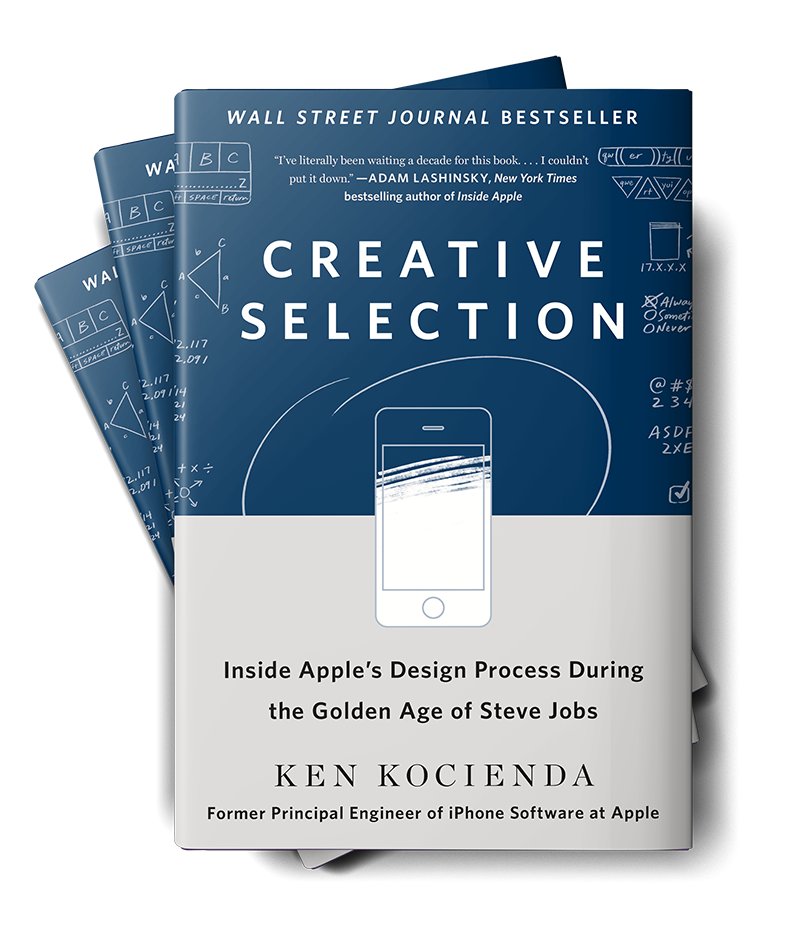Apple, as a brand, has always been synonymous with innovation and impeccable design. But what goes on behind those iconic glass doors? Ken Kocienda, a former Apple engineer, provides an insider’s view into the design and development process during the Steve Jobs era in his book “Creative Selection.”
The Iterative Process
At the heart of Apple’s design philosophy, as Kocienda describes, is an iterative process. Ideas aren’t just born; they’re refined, tested, tweaked, and tested again. This relentless pursuit of perfection, where designs undergo countless “demos” before finalization, is what sets Apple products apart.
The Role of Collaboration
Kocienda emphasizes the collaborative nature of Apple’s design process. Engineers, designers, and managers work closely, challenging and pushing each other towards excellence. This synergy, where diverse perspectives converge, is the crucible where Apple’s groundbreaking products are forged.
The “Direct Manipulation” Principle
One of the standout concepts in the book is the principle of “direct manipulation.” It’s the idea that users should feel a direct connection with the software, almost as if they’re manipulating the code with their fingers. This principle played a pivotal role in the development of the iPhone’s touchscreen interface.
Steve Jobs' Influence
Throughout the book, the influence of Steve Jobs is palpable. His relentless pursuit of perfection, his ability to envision products that customers didn’t even know they wanted, and his hands-on approach to design and development shaped Apple’s golden era.
Five Key Learnings from “Creative Selection”
- Relentless Iteration: The path to perfection is paved with countless iterations. The willingness to refine and rework is crucial.
- Collaboration is Key: Groundbreaking products are often the result of diverse minds working in tandem, challenging and complementing each other.
- User-Centric Design: Apple’s design philosophy always places the user at the center. Every design decision is made with the user’s experience in mind.
- Simplicity and Elegance: Apple products are known for their simplicity and elegance, a testament to the company’s design ethos where less is often more.
- Visionary Leadership: The role of visionary leaders, like Steve Jobs, in shaping products and guiding teams cannot be overstated.
Related Readings
- “Steve Jobs” by Walter Isaacson: A comprehensive biography of the tech icon, delving into his life, philosophy, and the creation of Apple.
- “Jony Ive: The Genius Behind Apple’s Greatest Products” by Leander Kahney: A look into the life and work of Apple’s chief design officer, Jony Ive.
- “Innovators” by Walter Isaacson: An exploration of the people who created the computer and the internet.
Conclusion
“Creative Selection” offers a rare peek into the hallowed halls of Apple during one of its most innovative periods. Kocienda’s firsthand account, filled with anecdotes, challenges, and breakthroughs, paints a vivid picture of what it takes to design products that change the world. For design enthusiasts, tech aficionados, or anyone curious about Apple’s magic, this book is a treasure trove of insights.
